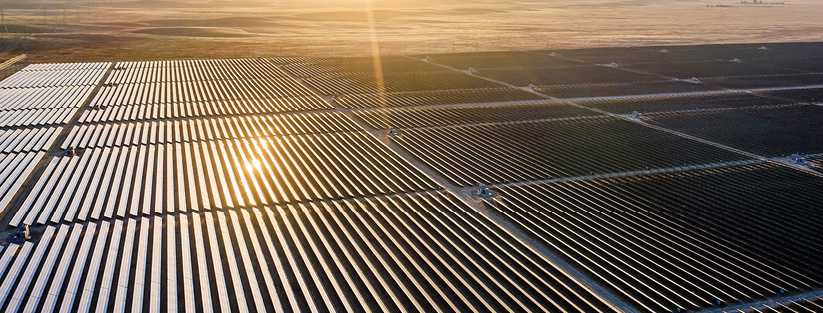From pv magazine Germany
PV and wind power are the most important way to reduce emissions in the electricity sector, the IEA said in its new “World Energy Outlook 2022” report. Their share of electricity generation will increase from 10% in 2021 to 40% in 2030, reaching 70% in 2050, according to the agency.
Solar provided more than 3% of global electricity generation in 2021. Annual capacity addition reached 150 GW, making 2021 another record year. Solar panel prices have fallen by 80% over the past decade, thanks to economies of scale and continuous innovation throughout the supply chain. As a result, PV has become the most affordable power generation technology in many parts of the world. The IEA expects annual growth to more than quadruple to 650 GW in 2030.
By then, annual solar and wind power installations in the United States will increase two and a half times from today's levels, thanks in part to the Inflation Reduction Act (IRA). New targets are also driving the massive build-up of clean energy in China, with the country's coal and oil consumption peaking before the end of this decade. Accelerated renewable energy deployment and efficiency improvements in the European Union mean that EU demand for gas and oil will fall by 20% and coal consumption by 50% over the course of this decade, according to the report.
Popular content
The average selling price of solar panels rose for the first time in 2021 – by around 20% from 2020 – due to higher freight and commodity prices, particularly for polysilicon. While module prices remained at high levels in the first half of 2022, the IEA said that continuous innovations, further improvements to materials, and energy efficiency will lead to further cost reductions.
The energy crisis triggered by Russia's invasion of Ukraine could accelerate the transition to a more sustainable energy system, according to the IEA. Although the use of fossil fuels will peak in this decade, it will then decline in the long term. The IEA forecasts that more than $2 trillion will be invested every year in climate-neutral technologies by 2030, through programs like the IRA, REPower EU, and others in Japan, South Korea, and China. This corresponds to an increase of more than 50% compared to today. However, that would still fall short of 1.5-degree target, which would require a $4 trillion investment by 2030.
“The energy markets and energy policies have been changed by Russia's invasion of Ukraine, and not just temporarily, but for the coming decades,” said Fatih Birol, director-general of the IEA. “Even with today's political framework, the energy world is changing dramatically before our eyes. Government responses around the world promise to make this an historic and definitive turning point towards a cleaner, more affordable and more secure energy system.”
This content is protected by copyright and may not be reused. If you want to cooperate with us and would like to reuse some of our content, please contact: editors@pv-magazine.com.


Great that the IEA are slowly catching up to the real world after their solar projections were beyond laughable for the past 10 – 12 years. Solar is now cheaper than they expected it to be by 2050, if ever.
Their 150 GW of solar in 2021 is below most estimates (170 GW+) and the estimates for 2022 installations are about 260 GW. By 2030 it will almost certainly be 1 TW+ a year installed, not 650 GW. It’s currently doubling every 2.9 years, and that’s likely to speed up thanks to the Inflation Reduction Act and Putin’s bastardry.
The IEA seem to ignore the Solar learning Curve of 25% and its effects on reducing cost and boosting demand.
By 2030 solar panels will be far more powerful, lighter and cheaper.
By the end of 2023, production capacity could well be between 400 and 500 GW, and growing each year.
I agree with Robert, that annual added capacity will most certainly be significantly more than 650 GW by 2030. If it is more than 200 GW for this year (2022) and doubling every three years, that would make it >400 in 2025, >800 in 2028 and >1600 in 2031. I continue to be puzzled as to why the IEA is so willing to project that bad things will happen faster than projected (carbon emissions) and so hesitant to project good things happening faster than projected (renwables growth)?
Although their projections have improved considerably they somehow can’t seem to grasp the cocept of exponential growth when it comes to renewables. They also seem to be having problems coming to grips with the idea that growth in production fossil fuels might be running up against some limits.
Just an update – there will be enough polysilicon capacity for 1 TW of potential solar panel production capacity by the end of 2025. That’s not to say that there will be that much demand by then, but that the way things are moving with Europe desperate to get off Russian gas, it may be that solar demand will boom and if that pattern continues, annual installs of 1.5 TW by 2030 will not be impossible at all – certainly the production capacity will be there.
Then, if installs double even at the rate they are now, every 2.9 years, then by 2040, there could be 6 – 10 TW a year of installs which would be a massive change in the global energy system. Plus of course, offshore and floating wind adding, by then…who knows? 100 – 200 GW a year? 400? 500?